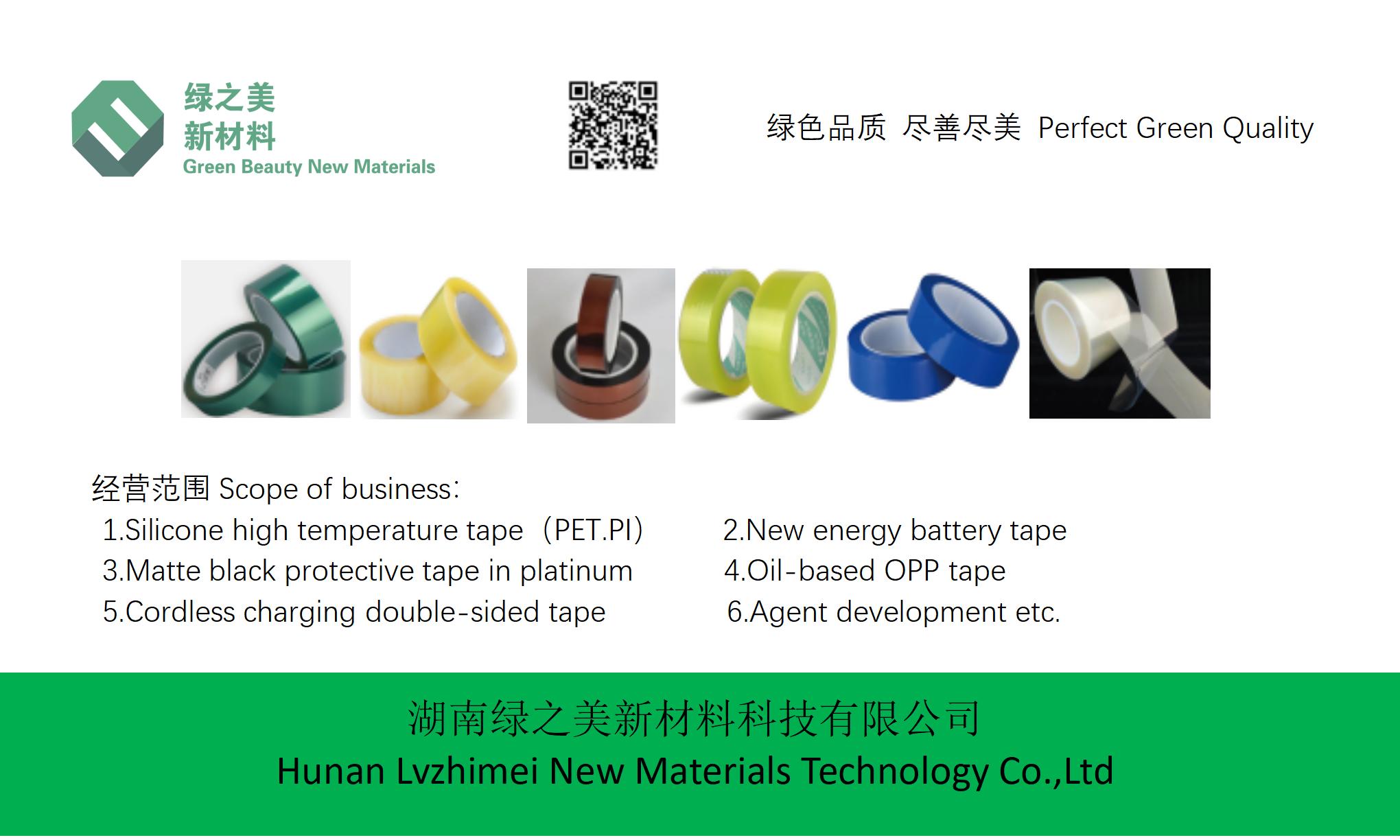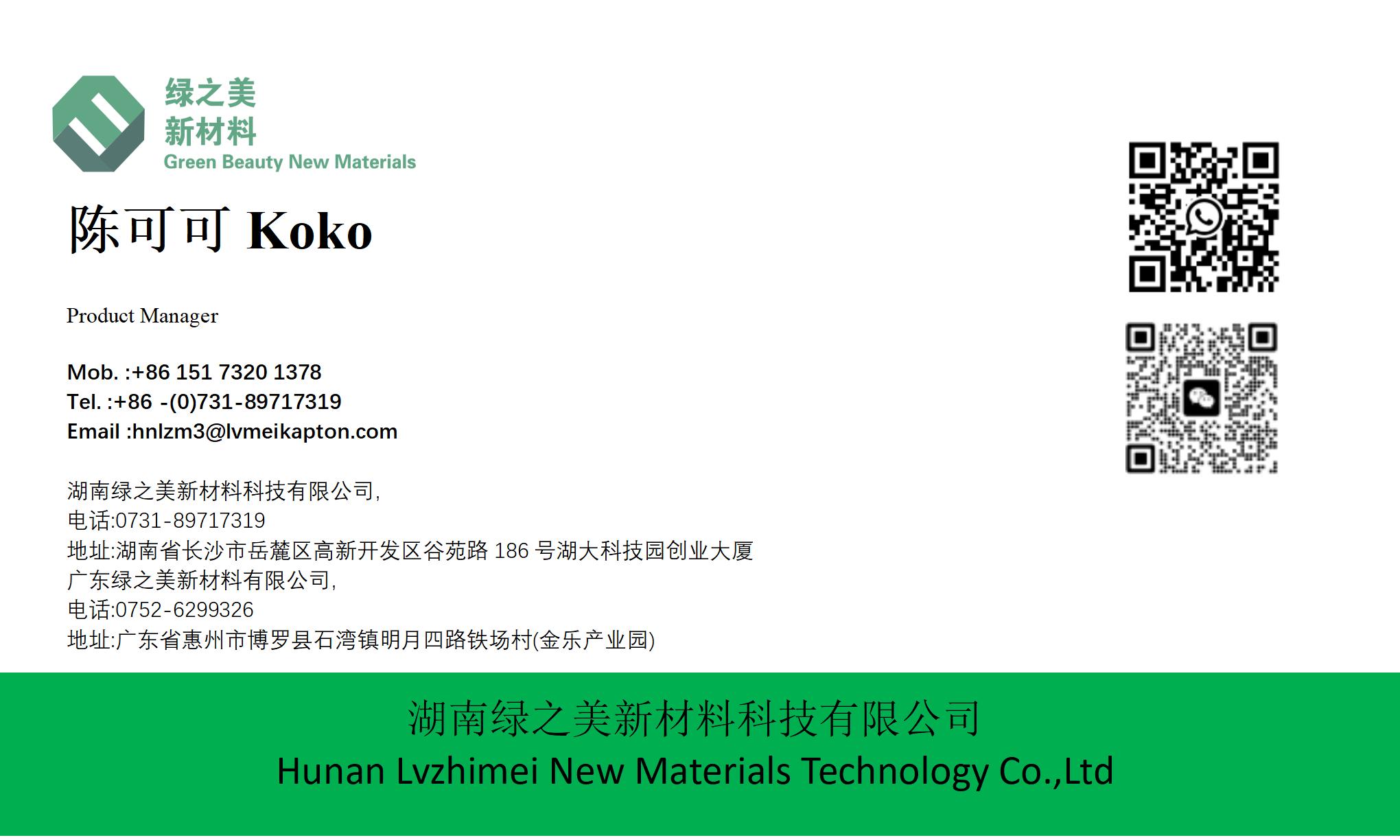hnlzm@lvmeikapton.com
+86 13787123465


Hunan Lvzhimei New Material Technology Co., Ltd.


NameDescriptionContent
How Does Strong Adhesion and Blocking High Temperature Tape Prevent Thermal Runaway in EV Batteries? |https://www.lvmeikapton.com/
Source:
|
Author:Koko Chan
|
Published time: 2025-04-17
|
73 Views
|
Share:
This article delves into the crucial role of Strong Adhesion and Blocking High Temperature Tape in preventing thermal runaway in electric vehicle (EV) batteries. It analyzes the tape's properties such as high - temperature resistance, strong adhesion, and thermal insulation capabilities, which are similar to those of PI material high temperature resistant 300 tape and LVMEIKAPTON insulating electrical tape. By exploring real - world applications and comparing it with other tapes, the article demonstrates how this tape effectively mitigates the risk of thermal runaway, ensuring the safety and reliability of EV batteries.
1. Introduction
The increasing popularity of electric vehicles (EVs) has brought the issue of battery safety to the forefront. Thermal runaway, an exothermic reaction in EV batteries that can lead to fires and explosions, is a major concern. Strong Adhesion and Blocking High Temperature Tape, along with related tapes like PI material high temperature resistant 300 tape and LVMEIKAPTON insulating electrical tape, play a vital role in preventing this dangerous phenomenon. These tapes are designed to withstand the harsh conditions within an EV battery and provide multiple layers of protection.
2. Understanding Thermal Runaway in EV Batteries
2.1 The Thermal Runaway Process
Thermal runaway in EV batteries typically occurs when a single battery cell experiences a rapid increase in temperature due to various factors such as internal short - circuits, overcharging, or mechanical damage. As the temperature rises, the cell's components start to break down, releasing flammable gases. This exothermic reaction can then spread to neighboring cells, creating a cascading effect that can quickly escalate into a full - scale battery fire.
2.2 Consequences of Thermal Runaway
The consequences of thermal runaway are severe. Not only does it pose a significant threat to the safety of passengers and the vehicle itself, but it also has a negative impact on the environment. In addition, the damage caused by thermal runaway can lead to costly repairs or even the complete replacement of the battery pack, which is a major component of an EV.
3. Key Properties of Strong Adhesion and Blocking High Temperature Tape
3.1 High - Temperature Resistance
One of the primary properties of Strong Adhesion and Blocking High Temperature Tape is its exceptional high - temperature resistance. Similar to PI material high temperature resistant 300 tape, it can withstand continuous exposure to high temperatures. It has a high melting point and can maintain its structural integrity even in extreme heat. For example, it can resist temperatures of up to 300°C, which is well above the normal operating temperature range of EV batteries. This property is crucial as it ensures that the tape does not degrade or lose its functionality when exposed to the heat generated during a potential thermal runaway event.
3.2 Strong Adhesion
The tape has a strong adhesive force that allows it to firmly bond to various surfaces within the battery. It can adhere to battery cells, electrodes, and other components, providing a secure and stable connection. This strong adhesion is important for several reasons. Firstly, it helps to keep the components in place, preventing movement that could potentially lead to short - circuits or other mechanical failures. Secondly, it ensures that the thermal insulation and protection provided by the tape are maintained over time, even under vibrations and mechanical stress.
3.3 Thermal Insulation
Strong Adhesion and Blocking High Temperature Tape also offers excellent thermal insulation properties. It acts as a barrier, reducing the transfer of heat between different components of the battery. This is similar to the function of LVMEIKAPTON insulating electrical tape in preventing electrical leakage. By minimizing heat transfer, the tape helps to contain the heat generated within a single cell, preventing it from spreading to adjacent cells and triggering a thermal runaway chain reaction.
4. How the Tape Prevents Thermal Runaway
4.1 Isolating Heat Sources
The tape's thermal insulation properties enable it to isolate heat sources within the battery. When a cell starts to overheat, the tape acts as a physical barrier, preventing the heat from escaping and affecting neighboring cells. This isolation is crucial in halting the spread of thermal runaway. For example, if a cell experiences an internal short - circuit and begins to generate excessive heat, the tape can prevent this heat from reaching nearby cells, buying time for the battery management system to take corrective action.
4.2 Maintaining Component Integrity
The strong adhesion of the tape helps to keep the battery components in their proper positions. This is essential as any misalignment or movement of components can lead to short - circuits, which are a common cause of thermal runaway. By ensuring that the electrodes, separators, and other parts of the battery remain in place, the tape reduces the risk of internal short - circuits and subsequent thermal runaway events.
4.3 Resisting Chemical Degradation
In addition to its physical properties, Strong Adhesion and Blocking High Temperature Tape is resistant to chemical degradation. EV battery electrolytes are often corrosive, and over time, they can damage the materials used in the battery. The tape's chemical resistance ensures that it can withstand the harsh chemical environment within the battery, maintaining its performance and integrity. This is similar to the chemical resistance properties of PI material high temperature resistant 300 tape, which also contribute to its effectiveness in preventing thermal runaway.
5. Comparison with Other Tapes
5.1 Adhesive PET Material High Temperature Tape
Adhesive PET material high temperature tape has lower high - temperature resistance compared to Strong Adhesion and Blocking High Temperature Tape. It may start to degrade or lose its adhesive properties at temperatures well below 300°C. This makes it less suitable for applications where high - temperature resistance is crucial, such as in EV batteries. In addition, its thermal insulation properties may not be as effective, increasing the risk of heat transfer between cells and potentially triggering thermal runaway.
5.2 Brown Circuit Board High Temperature Tape
Brown circuit board high temperature tape may have some level of high - temperature resistance, but it may not offer the same level of strong adhesion and thermal insulation as Strong Adhesion and Blocking High Temperature Tape. Its adhesive strength may be insufficient to keep the battery components firmly in place under mechanical stress, and its thermal insulation capabilities may be limited. This can compromise the tape's ability to prevent thermal runaway effectively.
6. Real - World Applications and Case Studies
6.1 Tesla's Battery Pack Design
Tesla, a leading EV manufacturer, has incorporated Strong Adhesion and Blocking High Temperature Tape in its battery pack designs. By using this tape, Tesla has been able to enhance the safety and reliability of its batteries. In real - world testing, the tape has proven to be effective in preventing thermal runaway events. For example, in a simulated overheating scenario, the tape successfully isolated the heat source and prevented the spread of thermal runaway to other cells in the battery pack.
6.2 Nissan's Leaf Battery
Nissan's Leaf, another popular EV, also utilizes tapes with similar properties to prevent thermal runaway. The use of Strong Adhesion and Blocking High Temperature Tape in the Leaf's battery has contributed to its reputation for safety. By ensuring that the battery components are well - protected and isolated from each other, Nissan has been able to reduce the risk of thermal runaway and improve the overall performance of the vehicle.
7. Future Developments and Challenges
7.1 Technological Advancements
As the EV industry continues to grow, there is a constant need for technological advancements in battery safety. Researchers are working on developing tapes with even better high - temperature resistance, stronger adhesion, and improved thermal insulation properties. Future versions of Strong Adhesion and Blocking High Temperature Tape may incorporate new materials or manufacturing techniques to enhance their performance further.
7.2 Cost - Effectiveness
While the tape is effective in preventing thermal runaway, its cost can be a challenge. As the demand for EVs increases, manufacturers are looking for ways to reduce costs without compromising on safety. Finding a balance between cost - effectiveness and performance will be crucial in the widespread adoption of these tapes in the EV industry.
8. Conclusion
Strong Adhesion and Blocking High Temperature Tape, with its high - temperature resistance, strong adhesion, and thermal insulation properties, plays a crucial role in preventing thermal runaway in EV batteries. Similar to PI material high temperature resistant 300 tape and LVMEIKAPTON insulating electrical tape, it provides multiple layers of protection that are essential for the safety and reliability of EVs. Through real - world applications and continuous technological advancements, this tape will continue to be a key component in the development of safer and more efficient EV battery systems. To learn more about the applications and benefits of Strong Adhesion and Blocking High Temperature Tape in EV batteries, you can download our in - depth technical report available at [download link]. This report provides detailed analysis and additional case studies for a comprehensive understanding.



Hunan Lvzhimei New Material Technology Co., Ltd.
Quick Links
Product Categories
© 2024 Hunan Lvzhimei New Material Technology Co., Ltd.All Rights Reserved. Designed by Erge
0731 - 89717319
hnlzm@lvmeikapton.com
+86 13787123465
Room 502, Chuangye Building, No186, Guyuan Road, High-Tech District, Changsha, Hunan, China
CONTACT



